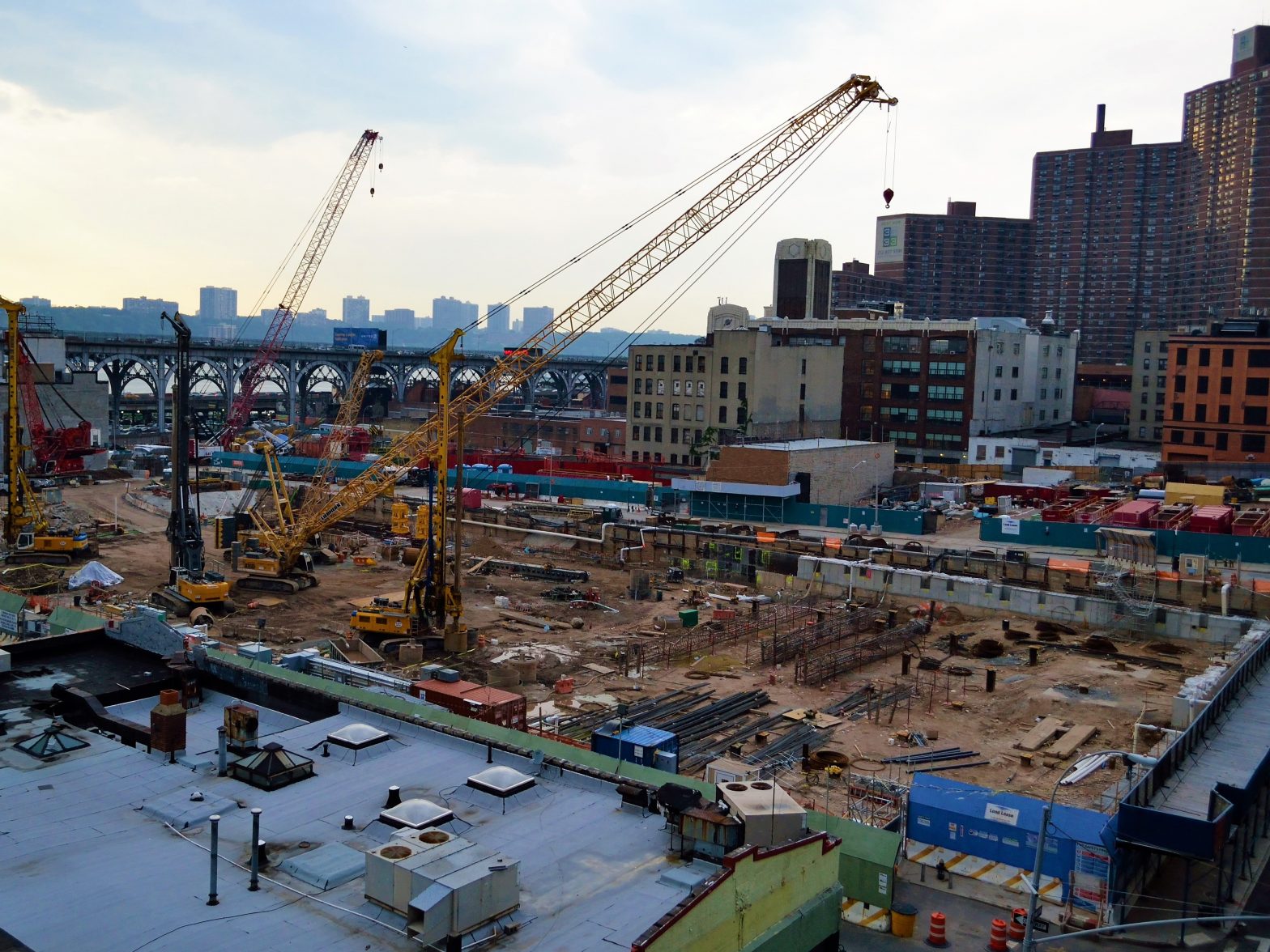It is not exactly news that construction costs in New York City are exceptionally high, especially for underground infrastructure. However, given New York’s importance to the American economy and the state of its infrastructure, construction costs are a real constraint on future growth. In addition, there are lessons that other cities can learn from New York’s experience.
The New York Times published a long-form piece about the East Side Access (ESA) project, by Brian M. Rosenthal called “Most Expensive Mile of Subway Track on Earth”. The title is in reference to ESA and other major capital projects of the Metropolitan Transportation Authority (MTA). MTA is the semi-independent state agency that owns and manages various transportation infrastructure, including the commuter rail lines and the subways in New York City.
According to the Times, ESA, the project to connect the commuter rail lines on Long Island to Grand Central Terminal, cost approximately $3.5 billion per mile. This is about seven times the average cost for subway construction worldwide. The Times identified several factors driving the excessive costs:
- Excessive staffing of trades with high pay and benefits required by labor agreements to which MTA is not a party.
- High construction costs due to inadequate competition and bids being padded in anticipation of difficulty working with MTA.
- High soft costs (i.e. design and management) due to poor coordination, lengthy review periods, design extravagance and untimely changes to the design. Soft costs are high as a percentage of overall cost (about 33 percent compared to the 20 percent average for similar projects), even given the abnormally high overall costs.
- Some insinuated effect of campaign contributions, political power and former MTA officials (“formers” in DC beltway parlance – See Mark Leibovich’s This Town) being hired by contractors and consultants.
I was involved in one of the Second Avenue Subway contracts, had less involvement in ESA and worked on a few other less notable MTA projects. I was not in a position to have observed the specific things that the Times reports, but I do not take exception to their assessment, aside from their characterization of ESA as a “subway” project (it is a heavy rail project that includes building a passenger train yard under an existing, underground railroad yard). However, the Second Avenue Subway and No. 7 subway line from Times Square to Hudson Yards cost $2.5 billion per mile and $1.5 billion per mile, respectively, which are still well above average costs. The overall point about New York City construction costs seems to have validity, at least for transit tunnels.
The Times writer, Brian M. Rosenthal, who is best known for statehouse coverage, probably over-emphasizes the politics and misses something about the process of how mega-projects and perhaps a lot of other public works project are built. That is not to say the politics are unimportant; anyone familiar with New York politics knows how the public authorities are used as instruments of the governor with plausible deniability due to their nominal independence. But politics cannot explain everything, especially given that there are other cities with aggressively political construction industries.
What strikes me is the extent to which consulting and construction contracting on large public works projects look more and more like other types of government procurement in terms of bureaucracy and the influence of politics. The extent to which this true probably varies markedly from place to place and agency to agency. If I said that a project came in several times above projected costs, years behind schedule and was plagued by poor coordination, extravagant or unreasonable specifications, bloated bureaucracy, frequent changes and undue influence from campaign contributors and “formers”, you would not know whether I was referring to ESA or something like the F-35 fighter program. Aside perhaps from the over-staffing problem on ESA, many of the issues are analogous.
This concerns me because government contracting is a business unto itself; there are firms that specialize in the process of obtaining and administering a contract with federal and certain state and municipal agencies. Many of them are household name defense contractors, but a lot of those companies do other things. As architecture, engineering and construction (A/E/C) firms have merged and consolidated, some of them established, in effect, in-house government contractors to pursue these projects, complete with “formers” in executive positions with connections that can help solicit work from government agencies.
The problem is that what makes a firm a good government contractor, such as agency connections and understanding of an agency’s practices and bureaucracy, are not the same skills that get public works projects designed and built. Delivering an underground railroad terminal is not the same as delivering furniture to a government office. If the sponsoring agency does not know how to execute their project and relies on firms that specialize in government contracting, rather than A/E/C firms experienced with similar projects, it becomes the blind leading the blind.
To come back to New York, consider the Build-It-Back program, which was intended to repair and improve homes damaged by Superstorm Sandy in 2012. (Full disclosure: I had some tangential involvement in one of the contracts under this program and it did not exactly go well.) The program was studied at multiple levels by business and property loss consultants and then the design and construction work was issued as a handful of large design-build contracts (design-build is still novel in New York). It is now over budget, behind schedule and has failed to meet expectations, although plenty has been spent on the consultants, contractors and government staffers loaned to the program by their agencies.
As I see it, the fundamental problem with Build-It-Back came from the project leadership being unable to translate the program objectives to the actual work in the field. They also failed to understand that repairing or improving hundreds of existing structures was not going to be amenable to one-size-fits-all solutions, especially in an urban setting, where site-specific issues tend to be disproportionally important. The program’s goals were admirable, but the program standards derived from those goals, applied mindlessly led to absurd results, particularly when coupled with “standardization” measures on a given contract. For example, I am aware of a house in the program that was slated to be elevated about two feet, complete with a new pile-supported foundation. Its first-floor elevation was between the Base Flood Elevation (the water level associated with a one percent annual probability of exceedance) and the program target elevation that provided three feet of freeboard. The program decided what the elevation of the first floor needed to be and the design team apparently decided that all of the houses in their contract needed to be on piles, despite the fact that pile foundations are highly unusual for wood-frame houses. Needless to say, the expected cost of elevating this home was obscene, particularly considering that the benefit was a few feet of freeboard in a low probability event. Did anyone ask if this made sense? This example may not be representative, but it does illustrate how the mindless application of standards leads to extravagance and waste. I understand that problems with practicality and the increasing political imperative to get something done has led to moving the goal post, thus leading to a lot of rework and confusion. This all increases cost.
Another concern is that treating large public works projects like ordinary government procurement favors larger firms than would otherwise perform the contract. Considerable resources are required to secure and administer contracts with federal and certain state and local agencies, including New York City. My experience has been that a lot of professional services contracts from large government agencies include uninsurable contractual liabilities that small firms cannot responsibly accept.
Some agencies have exceptionally bureaucratic processes that increase the effort, and cost involved in their projects. In addition to creating additional work, this adds uncertainty as to what level of effort will be required to complete the project. The higher level of effort and uncertainty favors large firms that can, in theory, better manage workload and risk. For example, on the Second Avenue Subway, MTA audited the design process for their contractors’ temporary works designers after approving those designer’s submittals and after the temporary work was in place. The additional work from this audit would be hard for a small firm to absorb and adds questionable value to the project. Writ large, this sort of rigid process may explain the “MTA Factor” added to subcontractor bids that the Times piece references.
Packaging public works projects so that only exceptionally large firms can responsively bid on them might sound reasonable since large firms are best suited to do so. However, that is not necessarily the case. Large firms are fewer in number, which means fewer firms proposing or bidding these large and complicated projects. Having fewer available bidders reduces competition and can increase cost. As the Times piece points out, MTA has experienced this. Large firms make money on projects with huge numbers of hours, particularly when those hours can be billed by junior professional staff or trade labor. They rely on process and repetition. As is turns out that was not a good model for completing repairs of hundreds of existing buildings on Build-It-Back. Perhaps the blind application of processes is how you design a $1 million repair for a home worth $300 as described by WCBS here.
New York City and State agencies and authorities seem to be increasingly adopting the processes that brought the Pentagon the legendary $400 hammer. Unlike New York, the federal government has made improvements in their procurement, but it is still a difficult client for small firms. New York City and State are not alone, of course; plenty of state and municipal agencies have policies and practices that make their contracts high risk for small firms. For example, the City of Lebanon, New Hampshire has placed one of the worst indemnities I have ever seen in their professional services contracts. Within one government agency in New York who I have worked for as a subconsultant, the person who can authorize work is not the same person who authorizes payment. As with MTA, there are business risks working for agencies like these and the risks can be hard for small firms to manage.
Endless studies, decreased competition, unrealistic standards, mindlessly rigid processes, moving goalposts, and poorly allocated risk all add cost to public works projects, without providing a commensurate public benefit. Given the state of infrastructure in the United States that should not be acceptable to anyone. But many of these unproductive cost drivers are the result of the policy tools available to and understood by the politicians, lobbyists, policy wonks and lawyers who wield them. They cannot fix these problems. What is needed is for architects, engineers and contractors to remove the blinders and holistically understand their work in its full context, including economics and, yes, politics. By pushing back and educating stakeholders and policy-makers the A/E/C industry may be able to prevent New York’s experience from becoming the norm.
